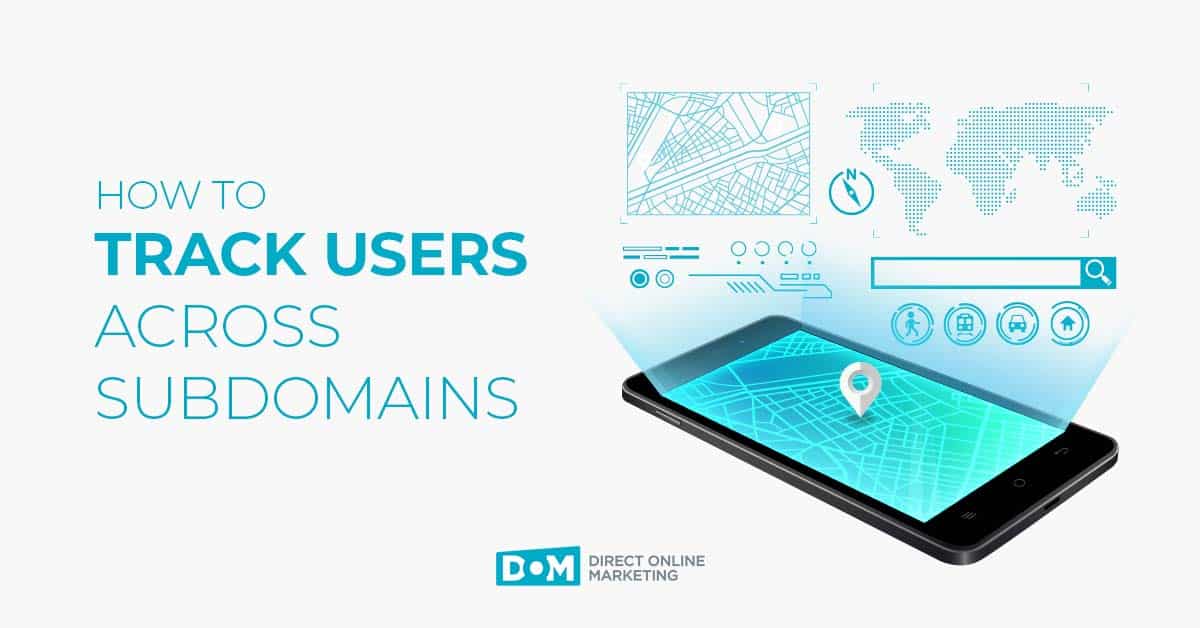
Table of Contents
- The Introduction
- The What and Why of First-Party Data
- Core Principles for Success
- Actionable Implementation
- Beyond the Basics
- The End
I rarely write these blogs in the first person, but today I’m making an exception. Since the topic de jour is first-party data, it feels thematically appropriate to bring down the curtain and let a little of myself shine through the blog I’m writing.
I wrote our original guide to first party data, back when we thought it might destroy Google. It’s also appropriate for me, personally, because I love the title of this week’s blog: Zen in the Art of First Party Data Strategy.
There won’t really be any zen in this blog post, or not much, because I cribbed the idea from a hero of mine, Ray Bradbury, who titled his amazing book about writing Zen in the Art of Writing.
He used zen in the title because lots of books at the time were selling well and, as a working writer back in the day where you could make a good living as a fiction writer, he always had an eye to saleability. Ray wanted to catch people’s attention with his title, and that’s my goal for this blog, too.
So, in the spirit of the first-person narrative, the first-person how-to, and the concept of first-party data, let’s get to it. First-party data is more important than ever, and you definitely need a strategy for collecting and using it.
The What and Why of First-Party Data
Let’s first get specific about what first-party data is. First party data is the information you directly collect from your audience through their interactions with your brand. This includes details like website behavior, purchase history, support interactions, email engagement, and any other insights you gather directly from your customers.
So, why the sudden emphasis on first-party data? Well, the way we use data for marketing has been in flux.
Previously, marketers relied heavily on third-party cookies to track users across the web and target ads. But with rising privacy concerns and browsers phasing out third-party cookies, the focus has shifted. First-party data is the new (old) lifeblood of effective marketing.
It’s both new and old, and here’s why: it’s new because the focus from so many companies is shifting to first-party data, and it’s old because businesses have been collecting first-party data since the first stirrings of commerce in the annals of human history.
A man selling spices at the bazaar remembers the faces and names of his best customers, a fisherman selling fish to the rice farmers remembers his customers’ favorite varieties, and so on.
First-party data is just an electronic version of things businesses have always done.
For folks like us, it’s superior to third-party data in key ways. First-party data is:
- More accurate because it comes straight from your audience.
- Privacy-compliant, building trust with your customers.
- Giving you direct control, allowing you to tailor your marketing efforts precisely to your specific audience.
Core Principles for Success
Transparency and Trust
Let’s be brutally honest: without consumer trust, your first-party data strategy crumbles. Be crystal clear about the data you collect, why it matters, and how it directly benefits your customers.
Don’t hide this information in legalese. Easy-to-understand explanations and granular opt-in/opt-out controls demonstrate respect for your audience, leading to a willingness to share and long-term brand loyalty.
Example: Patagonia, the outdoor brand, has a transparent Privacy Policy that uses plain language to explain what they collect, how it’s used, and user rights. They emphasize customer control with clear opt-out options.
Why it Works: This transparent, customer-centric approach fosters trust.
Data Collection and Enrichment
Standard signup forms get the job done, but don’t settle for the bare minimum.
Explore creative ways to capture those rich data points. Think well-crafted loyalty programs that incentivize sharing beyond basic info, polls and surveys that are genuinely relevant to your customer base, and maybe even interactive content that’s fun to engage with.
But here’s the key: view data collection as a journey, not a one-and-done task.
Start with the essential information, then progressively enrich profiles over time. Ask for more details contextually – after a purchase, when preferences change, or when users show interest in different product areas.
Example: Sephora’s Beauty Insider loyalty program encourages customers to share details like their birthday, purchase preferences, and skincare concerns. These are tied to tailored rewards, personalized recommendations, and relevant content.
Why it Works: By offering value, customers willingly provide further information and deepen engagement with the brand.
Centralization and Integration
Siloed data is like an incredible ingredient that never makes it into the dish. Break down those barriers. A centralized, unified view of your customers is the secret weapon. This empowers you to create detailed profiles that go beyond basic demographics.
This deep understanding enables targeted, personalized marketing across channels, ultimately maximizing campaign ROI.
Example: Spotify uses a centralized data system to integrate listening history, user-created playlists, search habits, and social actions like ‘likes’ and follows.
This comprehensive picture of each user’s preferences fuels highly tailored experiences, like the weekly “Discover Weekly” playlist and hyper-personalized music recommendations.
Why it Works: This unified data-driven approach creates a consistently relevant listening experience that builds loyalty and keeps users hooked.
Actionable Implementation
A solid first-party data strategy isn’t built on principles alone, it requires the right technological infrastructure. Let’s discuss the tech tools needed to make this all work.
The Tech Stack
Building a winning first-party data strategy calls for the right tools. You’ll likely need some combination of the following:
Customer Data Platform (CDP): A CDP provides the backbone for aggregating, cleaning, and unifying customer data across your various sources (website, CRM, email tools, etc.).
Look for CDPs offering flexibility and robust integration capabilities.
Popular examples are Segment, Tealium and Salesforce CDP.
Data Warehouse: A data warehouse often works in tandem with your CDP, serving as a central storage repository for structured data. It can be invaluable for analysis and reporting purposes.
Examples include Amazon Redshift and Google BigQuery.
Analytics Tools: Powerful analytics solutions will translate your data into insights. Select tools that facilitate data visualization, cohort analysis, and segmentation for effective decision-making.
The best example of this is Google Analytics, and I’m not just saying that because I work with some of the most knowledgeable digital analysts in the game who make up our core Google Analytics services.
Remember, the best tech stack for your needs depends on your specific business requirements and budget. Do thorough research and consider factors like scalability, ease of integration, and support options.
How to Use Your First-Party Data In Responsible Ways
Now’s where first-party data gets exciting – let’s put it to work across your marketing channels:
Google Ads and Microsoft Ads
First-party data brings laser focus to your PPC campaigns. Target audiences who resemble your best customers, zero in on the messaging that resonates with different segments, and confidently allocate your budget where it counts.
Email Marketing
Ditch the generic email blasts. Segment your lists based on what sparks their interest or where they are in their buyer’s journey. Use your data to make every email feel like it was written just for them – personalize subject lines, offer targeted recommendations, and always send content with value for your audience in mind.
Website Personalization
Say goodbye to a static website. First-party data unlocks the ability to adapt your site to each visitor. Showcase products they’d love, highlight content that aligns with their interests and make data-driven adjustments to your messaging to encourage engagement and conversions.
Measurement and Iteration
A first-party data strategy isn’t something you set and forget. It’s a continuous optimization loop. This is where you need to define and track the KPIs that align with your business goals. Some common KPIs include:
- Customer Acquisition Cost (CAC): How much does it cost, on average, to acquire a new customer? First-party data can help lower this over time.
- Customer Lifetime Value (CLV): How much revenue can you expect from a customer over their relationship with your brand? This metric helps gauge the long-term value of your data-driven efforts.
- Retention Rate: How effective are you at keeping customers coming back? Improving retention is a key benefit of effective data usage.
Regularly analyze your data to identify patterns, successes, and areas for improvement.
- Did a particular campaign segment outperform others?
- Did website personalization lead to higher conversions?
Use these insights to refine your approach and make even smarter decisions in the future.
If something didn’t work, stop doing that and, while you’re at it, start A/B testing.
Beyond the Basics
Let’s explore some strategies that can push your first-party data even further:
- Data Collaboration: If your business model permits, consider securely enriching your existing data through alliances or second-party data partnerships. This can fill in gaps and provide a broader spectrum of insights when done responsibly.
- Predictive Modeling: Harness your first-party data to power predictive analytics. Using machine learning algorithms, you can identify patterns, predict future customer behavior, and proactively anticipate needs. This fuels everything from churn prevention efforts to targeted cross-selling.
- Ethical Considerations: Always prioritize user privacy and transparency when employing advanced data use. Stay up-to-date on evolving regulations like GDPR and CCPA. You have to stay both compliant and focused on building customer trust.
The End
Ray Bradbury has inspired me ever since I read Zen in the Art of Writing, and I still keep a copy close to me. It’s a good way to remind me why I do what I do and why I love it so much.
As Ray wrote: We have our Arts so we won’t die of Truth. That fella could really put words together.
Ray Bradbury’s words on the power of art ring true in marketing. A thoughtful first-party data strategy brings clarity to the complicated, crowded field of digital marketing. It reminds us why we do what we do.
Our work isn’t just selling stuff, it’s connecting with our customers. First-party data helps us craft compelling stories built on genuine understanding, not guesswork.
With the right approach, first-party data becomes a tool for expression. It empowers us to create experiences that resonate. Just like that early spice seller, your brand can recognize and greet your customers by name, in a way. First-party data makes it all happen.
Need a partner to guide your first-party data journey?
Our top-rated Marketing Analytics Services team can help. We share your passion for strategic, customer-centric marketing, and we’ve been doing it for a long time. Contact us today to get started!
Key Takeaways
- First-Party Data Definition: First-party data refers to information collected directly from your audience through interactions with your brand, including website behavior, purchase history, and support interactions.
- Importance of First-Party Data: With the decline of third-party cookies and increasing privacy concerns, first-party data has become essential for effective marketing strategies. It offers accuracy, privacy compliance, and direct control over targeting efforts.
- Core Principles for Success: Transparency and trust are paramount in first-party data strategies. Clear communication about data collection practices and offering granular opt-in/opt-out controls build trust with customers.
- Data Collection Strategies: Beyond standard signup forms, explore creative methods like loyalty programs and surveys to capture rich data points. Continuously enrich customer profiles over time based on changing preferences and behaviors.
- Centralization and Integration: Siloed data inhibits effective marketing. Centralizing customer data enables detailed profiling and personalized marketing across channels, leading to increased campaign ROI.
- Actionable Implementation: Utilize technology tools such as Customer Data Platforms (CDPs), data warehouses, and analytics tools to implement and optimize first-party data strategies effectively.
- Responsible Use of First-Party Data: Implement first-party data across marketing channels like Google Ads, email marketing, and website personalization to deliver targeted and personalized experiences for customers.
- Measurement and Iteration: Continuously track KPIs like Customer Acquisition Cost (CAC), Customer Lifetime Value (CLV), and retention rate to refine strategies based on insights and improve decision-making over time.
- Advanced Strategies: Consider data collaboration, predictive modeling, and ethical considerations like user privacy and compliance with regulations such as GDPR and CCPA to further enhance first-party data strategies.
- Connection with Customers: Ultimately, a thoughtful first-party data strategy enables brands to connect with customers on a deeper level, crafting compelling stories based on genuine understanding and fostering long-term relationships.


